Thus wrote the renowned painter, Robert Barnete, considered by critics to be the Goya of the 20th Century. Though his subjects were the flamenco dancer, the toreador, the toro 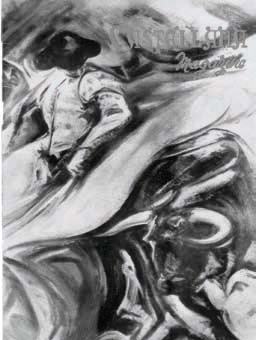 and, above all, the horse and its rider, his true passion was for glorious, articulated, electric energy and the power of motion.
and, above all, the horse and its rider, his true passion was for glorious, articulated, electric energy and the power of motion.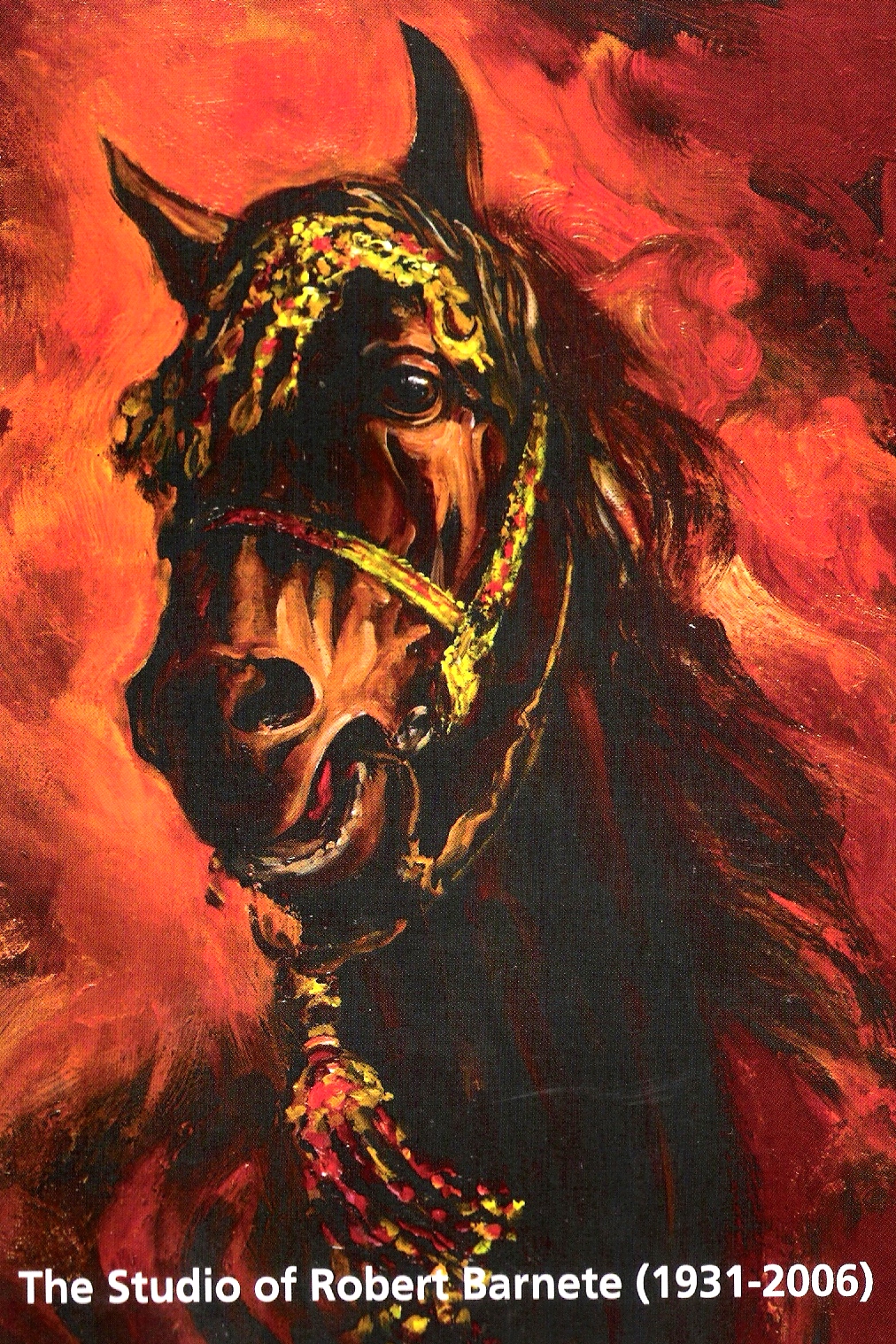
Critics speak of his paintings as "an explosion of movement...lively, impetuous, dramatic." The vibrancy of his colors matches the potency of his images. Barnete's work and his inimitable touch have found their way into private collections all over the world.
Born in New York City, he graduated Art School at the age of seventeen and, having acquired a great interest in Spanish and Mexican art, went on to finish his studies at the University of Mexico. Influenced artistically and personally by the great muralist Diego Rivera he traveled extensively through Mexico, the Yucatan peninsula, the jungles of Central America, and Panama.
After several successful exhibitions in Mexico City, Barnete went to Paris to live and continue to study. After two years in Paris the strong impression left by his studies in Mexico took him to Spain, which was to become his home materially and artistically for the next twenty-eight years. Quoting again from his memoirs: "During the years I lived in Madrid, flamenco dancing was the theme that most absorbed me as a painter. The human body as expressed through the gestures of the dance was what led to my interest in the taurine theme. 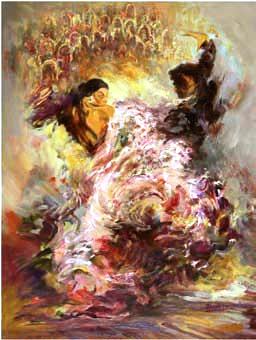 This in turn led eventually to my greatest passion - the equine theme." During his Spanish period Barnete absorbed the color, the emotion, the temperament of that fascinating country, and in all of the paintings his obsession is with movement.
This in turn led eventually to my greatest passion - the equine theme." During his Spanish period Barnete absorbed the color, the emotion, the temperament of that fascinating country, and in all of the paintings his obsession is with movement.
His paintings of Spanish folklore themes earned him recognition world-wide. Art critics said that his wild scenes of flamenco dancers were moody sensitive oils that "with burning truth capture the very marrow of Spain." When the Spanish Government knighted him in 1966 for his contribution to Spanish Art and Culture, Barnete became only the second foreigner in Spanish history, and the first American painter, to be so honored.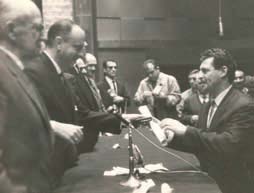
In the 1960s and 1070s, Hollywood came to Spain in the form of film production. The people who bought Barnete's paintings reads like a Who's Who of Cinema: producers Jack Warner and Ted Richmond; Academy Award-winning director David Lean; actors and actresses such as Ava Gardner, Omar Sharif, Victor Mature, Broderick Crawford, 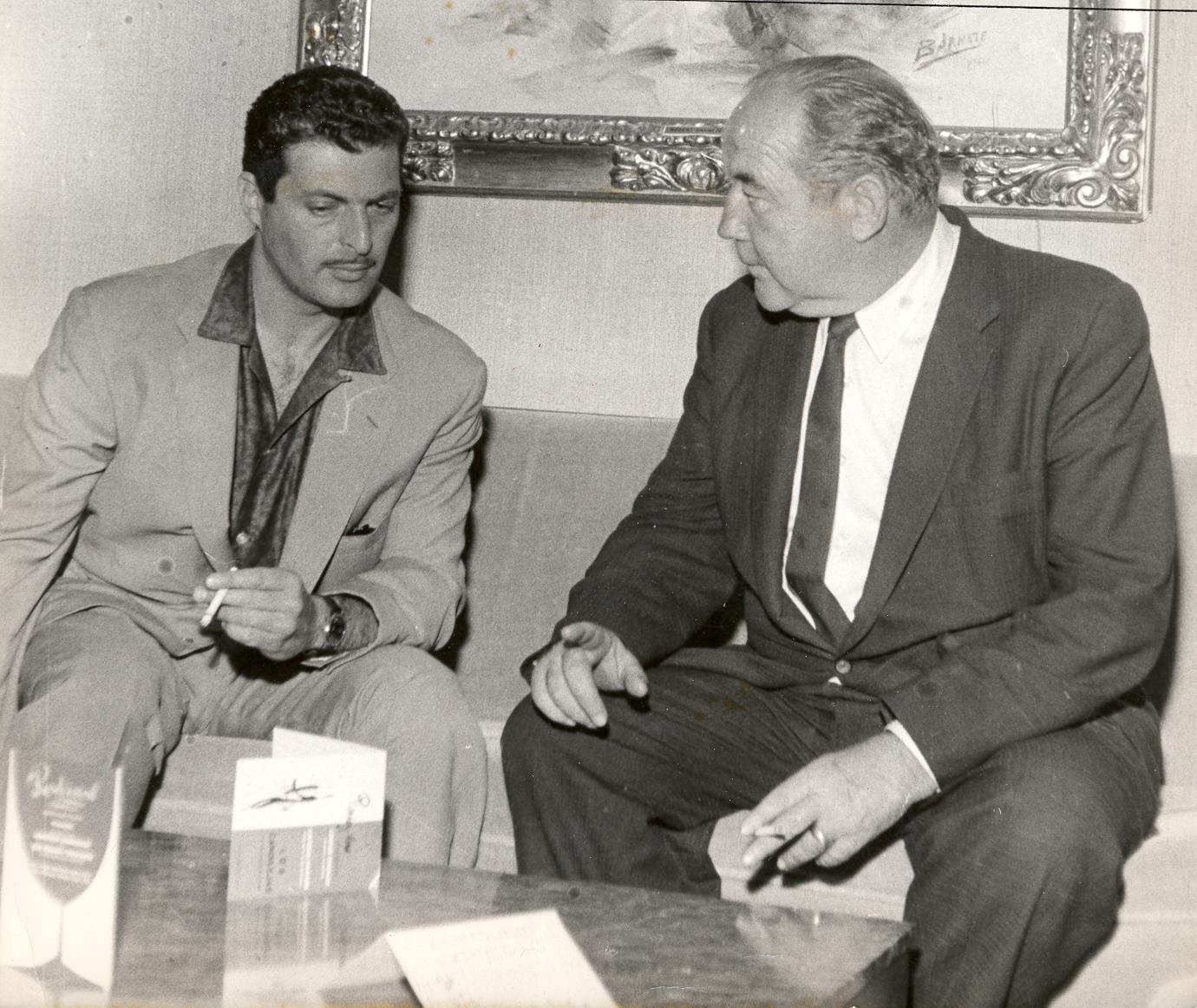 Ursula Andress, Arthur Kennedy, John Derek, David Niven, Nicholas Ray, Lionel Jeffries, Warren Mitchell, Tyrone Power, Robert Mitchum, Tom Courtney, Anita Ekberg and Pedro Armendáriz all bought Barnete's work. The famed Maestro Dimitri Tiomkin and author Ernest Hemingway were also clients and great admirers of his. Aside from some four paintings now in the possession of his brother, theatre and film artist Alexander Barnett, all of the more than 1,000 Spanish paintings of Robert Barnete were sold and are all held in private collections.
Ursula Andress, Arthur Kennedy, John Derek, David Niven, Nicholas Ray, Lionel Jeffries, Warren Mitchell, Tyrone Power, Robert Mitchum, Tom Courtney, Anita Ekberg and Pedro Armendáriz all bought Barnete's work. The famed Maestro Dimitri Tiomkin and author Ernest Hemingway were also clients and great admirers of his. Aside from some four paintings now in the possession of his brother, theatre and film artist Alexander Barnett, all of the more than 1,000 Spanish paintings of Robert Barnete were sold and are all held in private collections.
In the late 1970s, having totally absorbed Spanish culture and art, Barnete traveled more and more throughout the Middle East. As he notes in his memoirs, "a whole new theme came into my work, forming an entirely new clientele. Although I visited many of the main cities of the Arab nations, it was the desert that interested me most, primarily for its people - the desert Bedouin and Tuareg.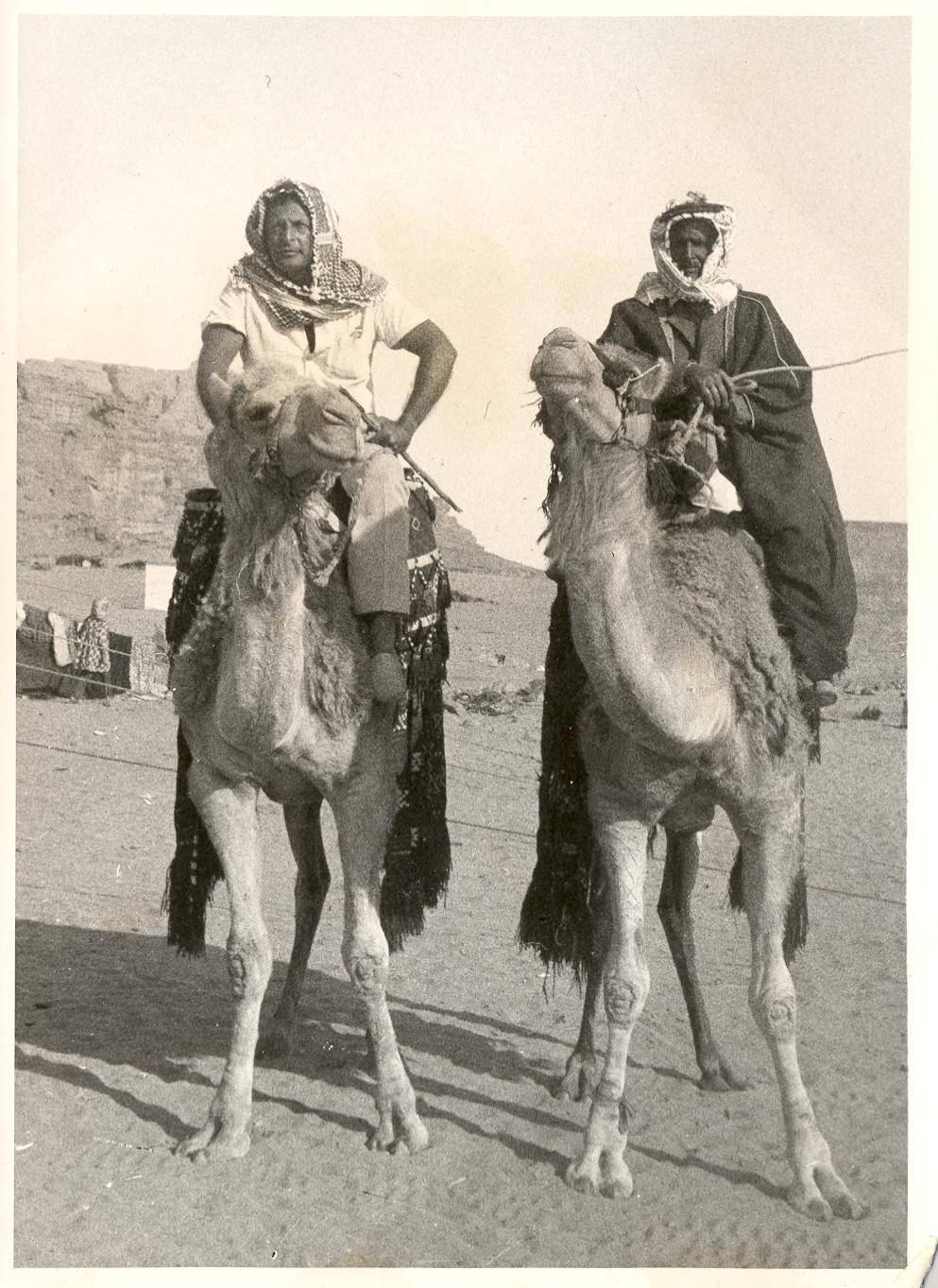 It was their life and customs, particularly revolving around the horse, that started to become a prominent part of my work. Traveling and living in the desert had a profound effect on me, further deepening my work and perfecting the theme that became my lifelong obsession: the horse and rider." Finally, in 1980, he moved to Tangiers and his work entered into the royal collections of H.R.H. King Fahd of Saudi Arabia (who purchased more than eighteen), H.R.H. King Hassan of Morocco (who bought six), H.R.H. Crown Prince Hassan of Jordan, and the King of Cambodia to mention only a few.
It was their life and customs, particularly revolving around the horse, that started to become a prominent part of my work. Traveling and living in the desert had a profound effect on me, further deepening my work and perfecting the theme that became my lifelong obsession: the horse and rider." Finally, in 1980, he moved to Tangiers and his work entered into the royal collections of H.R.H. King Fahd of Saudi Arabia (who purchased more than eighteen), H.R.H. King Hassan of Morocco (who bought six), H.R.H. Crown Prince Hassan of Jordan, and the King of Cambodia to mention only a few.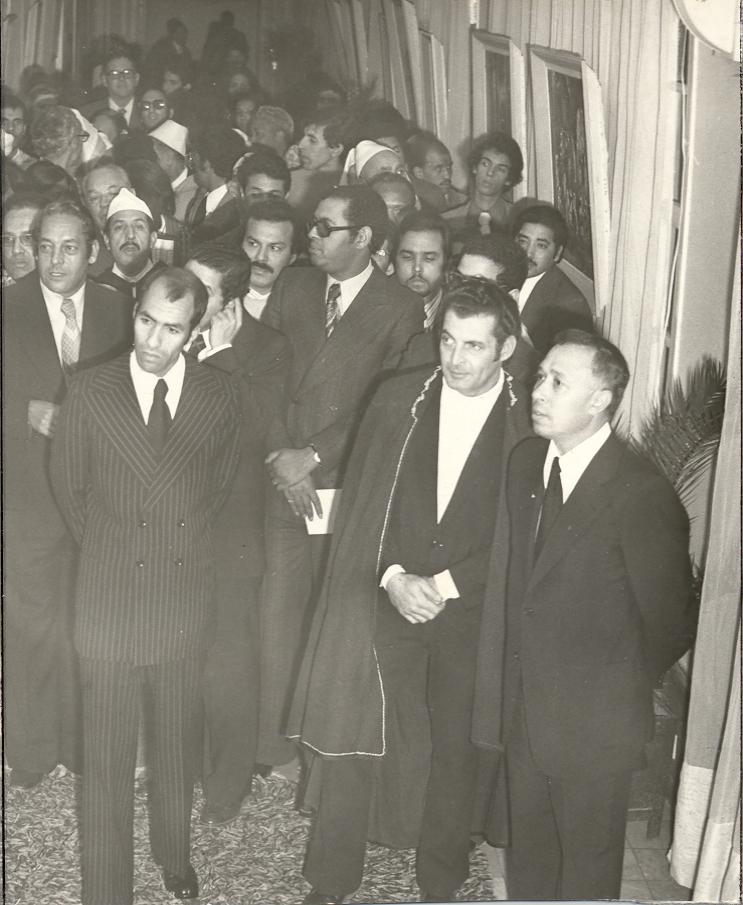
In his quest for understanding and knowledge Barnete lived with the Bedouin in the deserts of North Africa, ate with them, shared nights and days in their tents, learned their languages, including various dialects. He absorbed the intimate details of the desert Arab's life - his clothing, his customs and mores, the trappings of his horses and camels, the armaments he uses - all these he portrays in his paintings, accurate down to the minutest detail. And, as in all his prior work, there is notion, excitement, and wind is billowing through the rider's robes. Most often the robes are blue - for Barnete knew the Blue People of North Africa well. 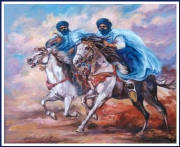
The Blue People were once populous in the deserts and mountains, but because of internal strife and tribal wars, they are nearly extinct. Barnete was the only painter to bring them to life, for no one knew their intrigues, their inner beings better than he. Although their days of glory are past, the Blue People line on in Barnete's paintings.
His years in North Africa offered him insights into desert life known to few non-Arabs. 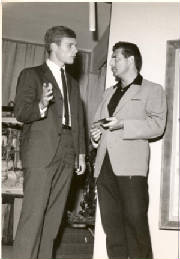 During his ten years in Tangiers, his paintings were acquired by such art collectors as Doris Duke, Barbara Hutton, Henry Kissinger, The Maharaja of Jaipur, Adnan Kassogi and various European and Japanese industrialists. He was also commissioned by the Eastman Kodak Co. of Morocco to paint "Fantasia," a huge mural of a long line of Arabian horses, charging at top speed, their riders waving and shooting their long rifles, shouting and whooping. The painting was placed in the company's offices in a room especially built to accommodate it.
During his ten years in Tangiers, his paintings were acquired by such art collectors as Doris Duke, Barbara Hutton, Henry Kissinger, The Maharaja of Jaipur, Adnan Kassogi and various European and Japanese industrialists. He was also commissioned by the Eastman Kodak Co. of Morocco to paint "Fantasia," a huge mural of a long line of Arabian horses, charging at top speed, their riders waving and shooting their long rifles, shouting and whooping. The painting was placed in the company's offices in a room especially built to accommodate it.
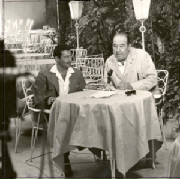
After many years concentrating on the theme of the Bedouin of the northern and western Sahara, the political situation became too untenable and traveling too dangerous. Realizing he could no longer work there, Barnete decided to relocate to London, where he spent the remaining years of his life. In addition to his great respect and admiration for the British people, which he mentions in his memoirs, the determining factor was the tremendous artistic potential he saw in combining polo and racing with his lifelong passion for equine painting. Having devoted much of his careers to painting horses in action, including numerous canvases of night polo as practiced by the Berbers of the northern Sahara, he was able to capture the player and his horse in full-throttled action, bringing to the work an experience and perspective that is unmatched by any other painter.
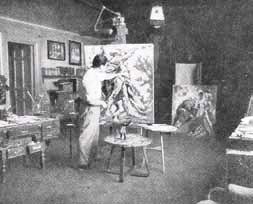 In his last years, troubled by ill health, friends and frustrated patrons found him to be increasingly reclusive. He refused to offer the original paintings for sale, insisting on selling prints in limited edition only. When his brother entered Barnete's studio after his death, he discovered that the "recluse," a man of insatiable curiosity and wanderlust, had surrounded himself with more than 4,000 books and hundreds upon hundreds of artifacts he had acquired in the course of his life and travels. He found notes for novels and film scripts. Photographs and letters and mementos. And he found more than a hundred fresh brushes, aching for the weight of paint. Stretched canvases waiting in pristine isolation. Innumerable tubes of untouched oils. All waiting for the moment Robert Barnete might begin again to do what he was born to do.
In his last years, troubled by ill health, friends and frustrated patrons found him to be increasingly reclusive. He refused to offer the original paintings for sale, insisting on selling prints in limited edition only. When his brother entered Barnete's studio after his death, he discovered that the "recluse," a man of insatiable curiosity and wanderlust, had surrounded himself with more than 4,000 books and hundreds upon hundreds of artifacts he had acquired in the course of his life and travels. He found notes for novels and film scripts. Photographs and letters and mementos. And he found more than a hundred fresh brushes, aching for the weight of paint. Stretched canvases waiting in pristine isolation. Innumerable tubes of untouched oils. All waiting for the moment Robert Barnete might begin again to do what he was born to do.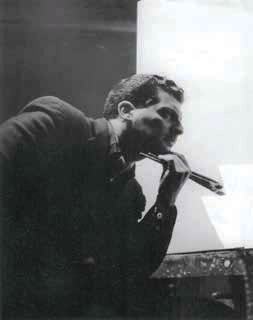
Now for the first time since his death, a limited few of Barnete's paintings are being offered to the public.

